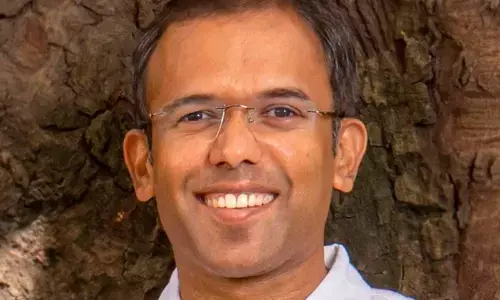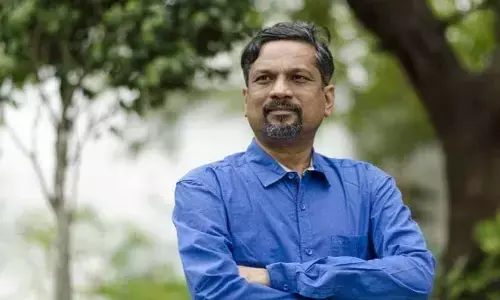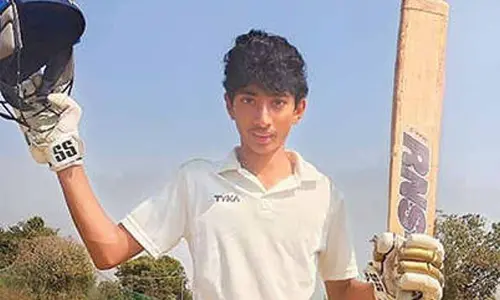Is Pradhan Mantri Awas Yojna destined to remain a pipe dream?

Other than food and water, shelter forms the third most important component of the basic human requirements It was fitting that the government turned its attention to that It wasnt for the first time, though, and will definitely wont be the last For years, Indian cities have been clogged by evergrowing population and the inability to shelter them
Other than food and water, shelter forms the third most important component of the basic human requirements. It was fitting that the government turned its attention to that. It wasnt for the first time, though, and will definitely wont be the last. For years, Indian cities have been clogged by ever-growing population and the inability to shelter them.
"Housing for All", or the Pradhan Mantri Awas Yojna (PMAY), was intended to solve this issue. But will it? Launched with much fanfare in 2015, three years down the line, the achievement is anything but satisfactory. The four components of the scheme include a credit-linked subsidy, in-situ development of slums, 35 per cent reservation for economically weaker sections (EWS) and an opportunity to build individual houses.
While the intentions look noble, at least on paper, in practice it's far from it. The scheme has many glaring loopholes. Take, for instance, the slum rehabilitation scheme. This component allows private builders to redevelop slums and, subject to certain conditions, avail benefits from the state government for each housing unit built. It basically involves taking a portion of a slum, building multi-storey flats on it and then moving the displaced people into those flats.
With frequent demolitions and evictions, it is almost impossible to provide paperwork to prove the permanent residency of a particular plot in a slum. Even if it is assumed that the evicted person rebuilds his house on the same exact plot each time it is demolished, the amount of effort required to produce documents like electricity or water bills to prove this is asking for too much. Though not mentioned explicitly, these dwellings are in many ways informal shanties and where basic amenities like electricity and water connections aren't provided -- they are managed illegally. Official documents, in many cases, just don't exist.
The provision of a cut-off date to be eligible for availing the benefit means that people don't have enough time to put all documents in place. Instead of getting rehabilitated, they are on the verge of getting evicted to make way for people who have documents to show. Corruption? Now take a look at the credit-linked subsidy scheme (CLSS). The scheme provides for varying credit-linked subsidies to home buyers up to an income of Rs 18 lakh.
The provision defines LIG (low income group) as someone with annual income between of Rs 3-6 lakh and an EWS (economically weaker section) individual as one with annual income below Rs 3 lakh. As per the Minimum Wages Act, the most that an unskilled sweeper can manage per annum is below Rs 1 lakh (monthly wages are pegged at Rs 8,238) and with the prices of most dwelling units much higher than this, they are surely going to be left out.
They can neither afford them on their own, nor are they eligible for any subsidies. Even for the ones who can get subsidies, the amount is too low to afford even a single room in big cities, forcing them to look for houses far from the city - which has its own problems.
Finally, individual house construction is just not happening. PMAY is also designed to help people repair or rebuild their homes, provided they can prove that the land on which their house rests is their own. It's a well-known fact that most of the houses in slums have been built on government land and there is no way, other than a forged document, to prove otherwise. The government may very well claim that land for itself.
Another component of the scheme involves building affordable housing units on government land with or without the partnership of private developers. In such cases, where private parties are engaged, the subsidy is provided to the developers once they reach the plinth level. On completion of their project, they can sell half of their stocks in the open market and rest to the EWS and LIGs at government-sponsored rates, during which the subsidy received by them is passed on to the buyers. It doesn't take much time to figure out that, ultimately, the subsidies are going to lie with builders, as, even with aid, EWS and LIGs can't afford houses close to the cities.
Other than these loopholes, there are at least two more drawbacks to the scheme. One is its inherent design which makes it almost impossible to build affordable dwelling units in close vicinity of cities, and the other is the time involved.
With high land prices and low incomes, builders will be forced to move farther away from the main city to become affordable. But, people who work in cities cannot afford to live too far from their workplaces. The additional costs involved will negate any gain that they might have, which is negligible to begin with.
The other is the time required to get approvals. Despite all the hype about Ease of Working, the process still remains too complex and time-consuming. It takes anywhere between six months to a year to get all the necessary approvals. If the land is yet to be acquired, the project could take years, leading to cost over-runs and erosion in profits.
As a policy framework, PMAY needs a lot of fixing, some big and some small. While providing housing for all should be a priority, this cannot be achieved by a shoddy scheme. In its three years of existence, the scheme has not been as successful as it was envisioned by the Prime Minister. Most of the projects have been stuck at different stages. If the government wants the policy to work, it will have to clear the roadblocks with regard to capital, land, approvals and documentation. Unless that's done, PMAY will remain a pipe dream. The scheme should be made implementable in the way the Prime Minister intended it to be.
(Neh Srivastava is Under Secretary, Ministry of Home Affairs and President, Central Secretariat Service Officers Society, CSSOS. The views expressed are personal. He can be contacted at [email protected] )



















